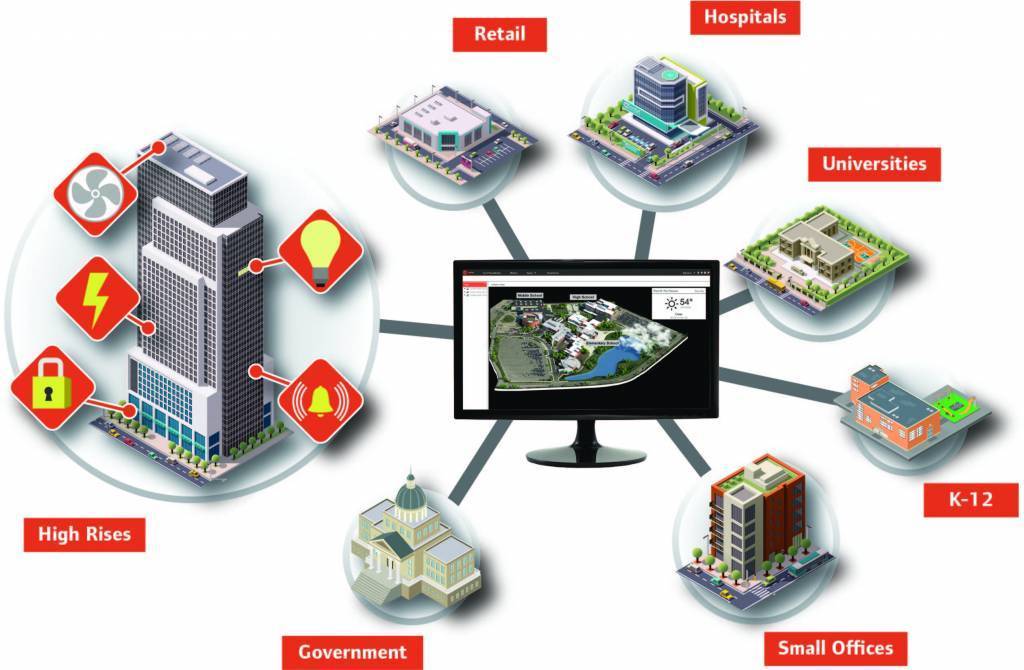Published with permission from Brady Services.
Everything else is connected – why not your building systems? It’s technology that’s here today, making it so much easier to monitor your building’s systems, analyze what’s happening – and optimize performance.
With the “connected building,” everything from HVAC and lighting to fire detection and security systems can be remotely monitored and controlled. An integrated web-based system is used to access and control the building’s different systems via a mobile device or other remote web access.
It delivers specialized information that’s accurate, useful and aligned with the priorities of property owners and managers. As a result, they gain insight into:
Which buildings are performing more efficiently?
Where improvements should be made
When there’s an issue that needs immediate attention.
Connected building technology automates maintenance services (to help reduce emergencies) and also streamlines service calls. Building faults can be diagnosed remotely and tackled in real-time, accelerating response time and reducing downtime.
Here’s how that works:
Say there’s a problem in one of your buildings. The system can help differentiate between controls, security, boiler, chiller or other mechanical issues, so the right person can quickly be dispatched to correct the issue. That means no wheel spinning, a faster fix – and less costly downtime.
Imagine being able to closely monitor utilities to determine how resources can be used more efficiently. The connected building lets you do that, too.
Of course, you may be concerned that being connected might take the place of face-to-face interaction with your technician. Don’t worry – it will still be there. No system will ever remove the need for hands-on technical knowhow. Technology can, however, help ensure the right person and equipment arrive to promptly take care of an issue.
What exactly do you get when you combine remote systems monitoring with on-site service? All kinds of benefits, including increased operational efficiency. Quick response times. Reduced energy consumption. Consistent comfort for occupants. Less unplanned downtime. In short, optimized building performance.
Todd Blanks, Service Technician, contributed to this article.

